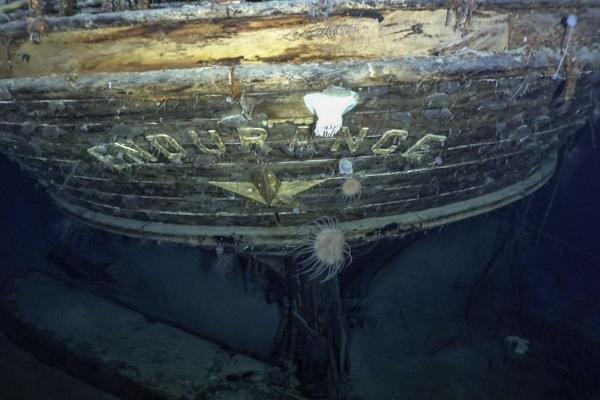Shackleton’s lost shipwreck discovered off Antarctica
JOHANNESBURG


One of the famous shipwrecks in history, Ernest Shackleton’s Endurance, has been discovered off the coast of Antarctica more than a century after its sinking, explorers announced on March 9.
Endurance was discovered at a depth of 3,008 meters (9,869 feet) in the Weddell Sea, about six kilometers (four miles) from where it was slowly crushed by pack ice in 1915.
“We are overwhelmed by our good fortune in having located and captured images of Endurance,” said Mensun Bound, the expedition’s director of exploration.
The expedition, organized by the Falklands Maritime Heritage Trust, left Cape Town on Feb. 5 with a South African icebreaker, hoping to find the Endurance before the end of the Southern Hemisphere summer.
As part of Shackleton’s Imperial Trans-Antarctic Expedition between 1914 and 1917, Endurance’s crew was meant to make the first land crossing of Antarctica. But their three-masted sailship fell victim to the tumultuous Weddell Sea.
Just east of the Larsen ice shelves on the Antarctic peninsula, the timber vessel became ensnared in pack ice in January 1915. It was progressively crushed and then sank 10 months later.
Shackleton’s expedition became legendary thanks to the miraculous escape he and his 27 companions made on foot and in boats.
The explorers used underwater drones to find and film the shipwreck in the merciless Weddell Sea, which has a swirling current that sustains a mass of thick sea ice that can challenge even modern ice breakers.
Shackleton himself described the site of the sinking as “the worst portion of the worst sea in the world.”
The region remains one of the most difficult parts of the ocean to navigate.
“This has been the most complex subsea project ever undertaken,” said Nico Vincent, the mission’s subsea project manager.
The underwater drones produced stunningly clear images of the 44-metre (144-feet) -long ship.
Amazingly, the helm has remained intact after more than a century underwater, with gear piled against the taffrail as if Shackleton’s crew had only recently left it.
Under international law, the wreck is protected as a historic site. Explorers were allowed to film and scan the ship, but not to touch it at all, meaning no artifacts may be returned to the surface.
